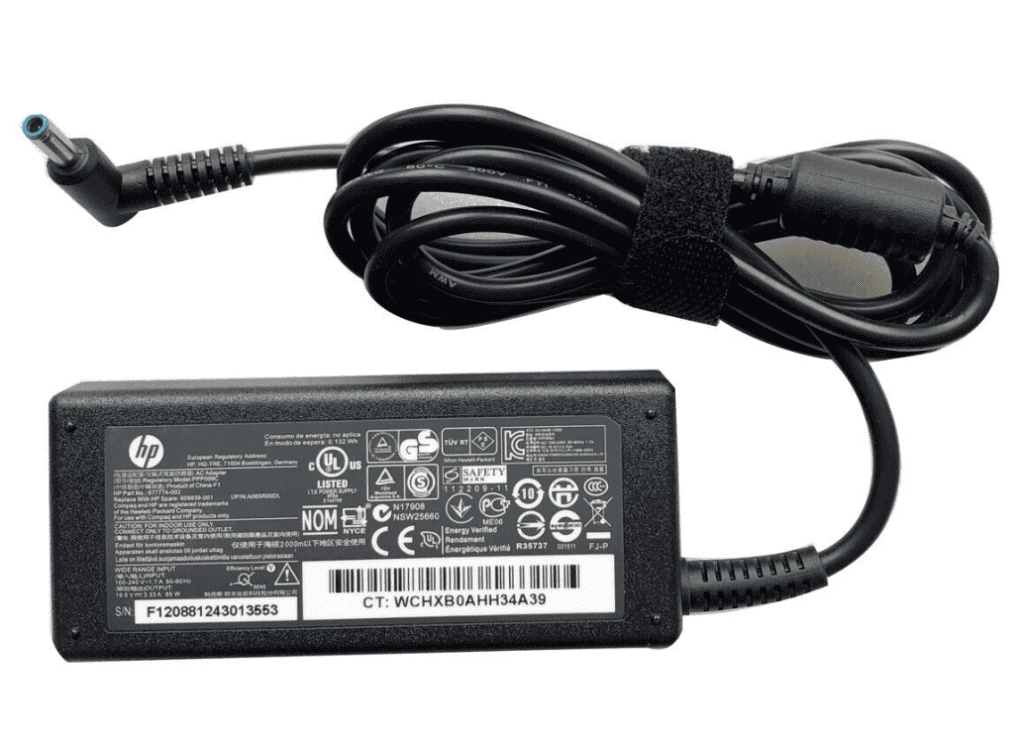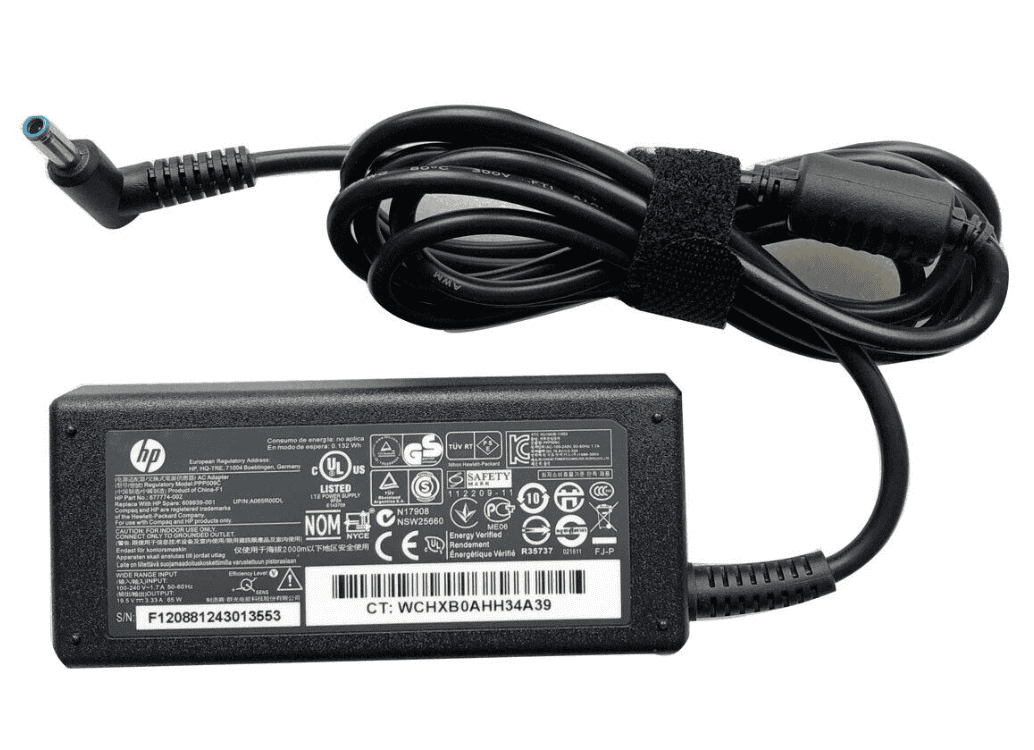Using the wrong power adapter for your laptop can indeed cause damage. It’s crucial to match the correct tip and output values when replacing your adapter. Ideally, you should replace it with the exact model as this is the safest option. If you must choose, it’s better to use an adapter with a higher-rated current rather than a higher-rated voltage. Your laptop is designed to draw only the current it needs to operate, so avoid using adapters that supply higher voltage.The adapter is more than just a means of delivering electricity to your laptop; it serves as a safeguard and is essential for ensuring your device functions properly without the risk of damage.

Understanding the implications of using a laptop power adapter with incorrect voltage or current values is important. Voltage mismatches can be particularly harmful and should be avoided at all costs. Therefore, it’s always best to use the adapter specifically designed for your laptop model or a compatible replacement that matches the voltage and current requirements precisely.
Using the Wrong Laptop Power Adapter: Risks and Consequences
Using a laptop power adapter with incorrect voltage or current values can potentially damage your laptop. Here’s why:
Voltage
- Too High: Supplying a higher voltage than your laptop requires can overload its circuits and cause irreparable damage to components.
- Too Low: An adapter with lower voltage might not provide enough power for your laptop to function correctly. It could lead to instability, unexpected shutdowns, or even failure to boot.
Current
- Too High: In most cases, a higher current rating (amperage) is generally safe. Your laptop will only draw the current it needs. However, an excessively high current could generate excess heat and potentially stress the charging circuits over time.
- Too Low: If the current rating is too low, the adapter won’t be able to supply enough power to meet your laptop’s demands. This can cause the adapter to overheat, potentially damaging both the adapter and the laptop.
Safety Features and Risks
Modern laptops and power adapters often have built-in safety features to protect against some voltage and current fluctuations. However, these safeguards are not foolproof and might not prevent damage in all cases.
Using an incompatible adapter can lead to:
- Overheating: This can damage the battery, charging circuits, and other internal components.
- Battery damage: Incorrect charging voltages can shorten battery life or even cause the battery to swell or leak.
- Fire hazard: In extreme cases, using a severely mismatched adapter could create a fire hazard due to excessive heat buildup.
Always Use the Correct Adapter
To avoid these risks, always use the power adapter that came with your laptop or a genuine replacement from the manufacturer. Check the label on your laptop and the adapter to ensure the voltage and current ratings match.
| Specification | Laptop Requirement | Adapter Output | Compatibility |
|---|---|---|---|
| Voltage | 19V | 19V | ✅ Compatible |
| Current | 3.42A | 4.74A | ✅ Compatible |
| Voltage | 19.5V | 19V | ⚠️ Potentially risky |
| Current | 3.42A | 2.1A | ❌ Incompatible |
Understanding Laptop Power Requirements
To choose the right power adapter for your laptop, you need to understand its power requirements. These are usually printed on a label on the bottom of the laptop or in the user manual.
- Voltage (V): Measured in volts, this indicates the electrical potential difference required to power your laptop. It must match the output voltage of the adapter.
- Current (A): Measured in amps (amperage), this represents the flow of electrical current. The adapter’s current rating should be equal to or higher than your laptop’s requirement.
- Wattage (W): Wattage is a measure of power calculated by multiplying voltage and current (W = V x A). The adapter’s wattage should ideally match or exceed your laptop’s wattage requirement.
If you’re unsure about your laptop’s power requirements or the compatibility of a power adapter, consult your laptop’s documentation or contact the manufacturer for assistance.
Understanding Voltage and Current in Laptop Adapters
What is Voltage and Current? Voltage, measured in volts (V), is essentially the pressure from an electrical circuit’s power source that pushes charged electrons (current) through a conducting loop. Current, measured in amperes or amps (A), is the rate at which electric charge flows. For your laptop to operate safely and effectively, it needs an adapter that provides the right amount of voltage and current.
Voltage Mismatches A voltage mismatch can be particularly harmful to your laptop. An adapter with a voltage rating higher than what your laptop requires can overload and damage the laptop’s internal components. It’s like forcing too much electrical pressure into the system, which the laptop isn’t built to handle. Conversely, an adapter with too low a voltage won’t supply enough power, leading to inadequate performance or failure to function.
Current Considerations The role of current is slightly different. Your laptop will only draw the amount of current it needs. If your adapter can supply more current than required, it’s generally not a problem – the laptop will use what it needs. However, if the adapter doesn’t provide enough current, it won’t be able to power the laptop effectively. This might not damage the laptop, but could lead to problems like slow performance or the laptop failing to charge properly.
Risks of Incorrect Power Adapter Use
Overvoltage Risks Using an adapter with a voltage higher than what your laptop requires is a recipe for trouble. It can lead to overheating, damage to the battery, and even fry the laptop’s internal components. It’s akin to sending a surge of power that the laptop’s circuits can’t handle.
Undervoltage Scenarios While an adapter with a lower voltage might not directly damage your laptop, it won’t provide sufficient power for its needs. This can result in the laptop not charging or operating at its full capacity, and potentially causing erratic behavior or system instability when the power demand increases.
Current Mismatch A current mismatch is less dangerous compared to a voltage mismatch. An adapter with a higher current rating than needed is generally safe as the laptop will only draw the necessary amount. However, an adapter with too low a current rating might not be able to keep up with the laptop’s power demand, leading to issues like the laptop turning off or draining the battery rapidly.
Best Practices for Using Laptop Adapters
- Match the Voltage: Always use an adapter that matches the voltage requirement of your laptop. This is crucial to prevent damage to your device.
- Adequate Current Supply: Ensure the adapter can supply at least as much current as the laptop requires. More is okay, but less can lead to performance issues.
- Avoid Generic Adapters: Generic or universal adapters might not provide the right combination of voltage and current, posing a risk to your laptop.
- Check for Compatibility: Before using a different adapter, always check its compatibility with your laptop model.
- Regular Inspection: Examine your power adapter and cables regularly for any signs of damage, wear, or tear.
Frequently Asked Questions
Can I use an adapter with a higher voltage rating than my laptop requires?
No, using an adapter with a higher voltage than required can damage your laptop.
Is it safe to use an adapter with a higher current rating?
Yes, using an adapter with a higher current rating is generally safe, as your laptop will only draw the current it needs.
Will a lower voltage adapter damage my laptop?
A lower voltage adapter won’t necessarily damage your laptop but might not provide adequate power for its needs.
Can mismatched adapters cause battery issues?
Yes, using an adapter with the wrong voltage can damage the battery or affect its charging efficiency.
Is it okay to use a universal power adapter for my laptop?
While it might be tempting, universal adapters might not always provide the correct voltage and current, and their use is generally not recommended.







